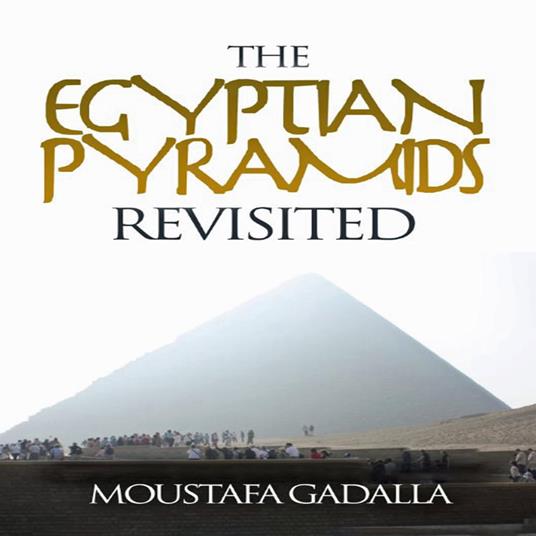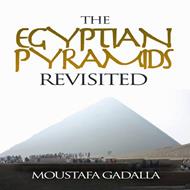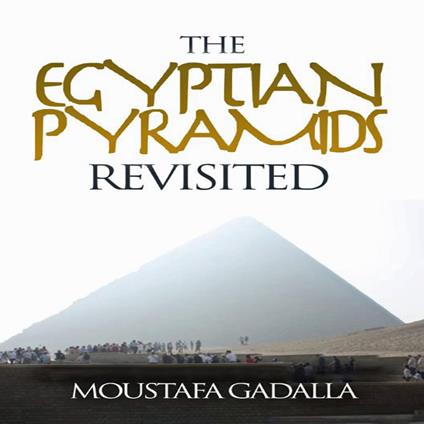The Egyptian Pyramids Revisited
SHORT DESCRIPTION The new expanded edition provides complete information about the pyramids of Ancient Egypt in the Giza Plateau. It contains the locations and dimensions of interiors and exteriors of these pyramids; the history and builders of the pyramids; theories of construction; theories on their purpose and function; the sacred geometry that was incorporated into the design of the pyramids; and much, much more. It also includes details of the interiors and exteriors of the Saqqara’s Zoser Stepped “Pyramid” as well as the three Snefru Pyramids that were built prior to the Giza Pyramids. It also discusses the “Pyramid Texts” and the works of the great pharaohs who followed the pharaohs of the Pyramid Age. LONG DESCRIPTION From a distance, what we have learned about the pyramids may appear factual; but once we examine this information closer, it proves to be otherwise. This book is intended to undo many false perceptions about the Ancient Egyptians’ pyramids. This book provides a fresh look at the interiors and exteriors of Egypt’s masonry pyramids, theories of construction, their purpose and function, and the sacred geometry of their design. This expanded edition of the book consists of seven fully illustrated parts, with a total of 18 chapters. Part I: Overview consists of two chapters—1 and 2, as follows: Chapter 1: The Background provides a short opening statement about the common “theories” and the counterpoints, based on actual facts. Chapter 2: The Genuine Masonry Pyramids provides a list of the Egyptian pyramids that were built during the Fourth dynasty about 4,500 years ago. Part II: Pyramids versus Tombs consists of two chapters—3 and 4—as follows: Chapter 3: Stepped “Pyramid” of Zoser covers details of its super-structure and its underground chambers. Chapter 4: The Fictional Tombs covers the details of a typical Ancient Egyptian tomb and how totally different it is from the interiors of the Egyptian masonry pyramids of the Fourth Dynasty. Part III: Pyramids—Functions & Forms consists of two chapters—5 and 6—as follows: Chapter 5: The Pyramid Complex shows how the Egyptian pyramid was a component of a complex that was connected to other temples; and the differences in functions and forms between a pyramid and a temple; as well as the energetic proportioning of such structures. Chapter 6: Pyramid Power covers the form variations of the Egyptian masonry pyramids; and how such forms attract, maintain and channel cosmic energies. Part IV: Pyramid Construction Techniques consists of two chapters—7 and 8—as follows: Chapter 7: The Flawed “Common Theory”covers the details of the Common ‘Theory”; the unidentified “source” of quarried blocks; the impossibilities of cutting and shaping the pyramid blocks; the impossible logistics of the fabricated ramps theory; the conveniently-ignored three immense Pyramids of Snefru; and a summation refuting the western-made “Common Theory”. Chapter 8: The Material Facts covers Herodotus’ accounts of pyramid construction; Egyptian molding techniques; the differences between synthetic and natural blocks; the various types of synthetic concrete blocks; the unique qualities of the pyramids’ casing stones; and additional evidential facts of synthetic pyramid blocks; as well as bringing to light the even more outstanding details of the earlier incredible masonry works of Saqqara. Part V: The Three Snefru Pyramids consists of three chapters—9 through 11—as follows: Chapter 9: Snefru’s Meidum Pyramid covers its detailed exteriors and interiors. Chapter 10: Snefru’s Bent Pyramid covers its detailed exteriors and interiors. Chapter 11: Snefru’s Red Pyramid covers its detailed exteriors and interiors. Part VI: The Three Pyramids of Giza consists of four chapters—12 through 15—as follows: Chapter 12: The Giza Plateau provides an overall diagram of the main points of interest in the Giza Plateau. Chapter 13: Khufu’s Great Pyramid covers its detailed exteriors and interiors. Chapter 14:
-
Autore:
-
Narratore:
-
Durata in (hh:mm:ss):03:46:56
-
Anno edizione:2021
Formato:
Gli Audiolibri venduti dal nostro sito sono in formato MP3 e protetti da un DRM proprietario Kobo.
Compatibilità:
Gli Audiolibri venduti dal nostro sito possono essere ascoltati sul tuo smartphone o tablet tramite la APP gratuita Kobo Books scaricabile da iOS o Android. Gli Audiolibri non possono essere scaricati in locale o trasferiti su un client di ascolto diverso da quello fornito tramite Kobo. Non è possibile ascoltare gli audiolibri con la Kobo APP Desktop. Puoi ascoltare gli Audiolibri tramite determinati eReader Kobo, utilizzando cuffie o casse con Bluetooth. Visita la pagina degli eReader per avere maggiori dettagli.
Cloud:
Gli Audiolibri venduti singolarmente dal nostro sito sono immediatamente sincronizzati sul tuo account personale in automatico. Successivamente all'acquisto, sono subito disponibili all'ascolto tramite i client di lettura Kobo compatibili.
Clicca qui servissero ulteriori informazioni



